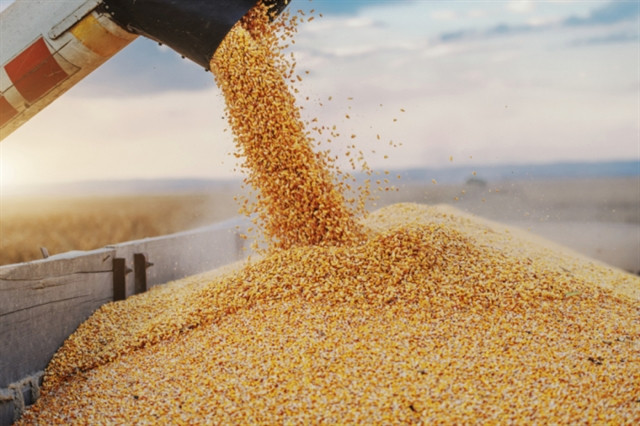 Russia-Ukraine tensions are pushing up prices of input materials for global production, such as wheat and corn. (Photo: nongnghiep.vn)
Russia-Ukraine tensions are pushing up prices of input materials for global production, such as wheat and corn. (Photo: nongnghiep.vn)This is among measures the ministry has raised toovercome difficulties caused by the political instability, warning onMarch 9 that the Russia–Ukraine conflict could deliver a major blow toagricultural trade.
The ministry said that the Russia–Ukraine tension together with measures suchas cutting off several Russian banks from the leading international paymentsystem SWIFT, freezing assets of big Russian banks, and restrictions on importsand exports would not only affect the Russian economy but also countriesthat had trade relations with Russia and Ukraine, including Vietnam.
The trade will be affected by Russia being disconnected from the SWIFTpayment system, the supply chain disruption in export-import, rising transportcost, and declining demand in related countries.
Deputy Minister of Agriculture and Rural Development Phung Duc Tien said that Vietnamexported about 550 million USD worth of agri-forestry-fishery products toRussia last year. Of the figure, coffee exports raked in 173 million USD andaquatic products 164 million USD.
Furthermore, Vietnam imported input materials for agricultural production fromRussia and Ukraine, such as wheat, maise and fertiliser. Last year, the countrypurchased about 500 million USD of agro-forestry-aquatic products from Russia.
Tien said firms must closely watch the situation to handle inventories or findalternative export markets. Importers should seek suppliers from othercountries.
The supply shortage from Russia and Ukraine was pushing up prices of inputmaterials for global production, such as wheat and corn, which had increased byabout 10-20 percent, affecting husbandry and cropping industries, he said.
Tien said the ministry would closely join hands with trade associationsand the State Bank of Vietnam to support payments for businesses whose productshave already been sent to Russia, but payment was affected by stagnantfinancial transactions.
The ministry will also work with importers to seek measures to stabilise pricesof input materials for domestic agricultural production and bolster investmentattraction.
Diversifying markets would be an important solution, he stressed.
Higher prices of corn in the global market coupled with delays in signing newcontracts and uncertainties about the worldwide corn shipping might cause Vietnam’scorn import in the first half of this year to fall to the lowest level in thepast five years, equivalent to a decrease of nearly 28 percent compared to2021, according to market analysis for the commodity sectors AgroMonitor.
The company forecast that corn import would be only 2 million tonnes in thefirst quarter of this year, 20 percent lower than the same period last year.
Russia and Ukraine held a market share of nearly 20 percent of the globalcorn market, of which a majority came from Ukraine with an annual volume of 30million tonnes. Ukraine ranked fourth in the world, after the US, Argentina,and Brazil.
The tension between the two countries would significantly impact the world cornmarket, strongly affecting the corn market and prices of animal feed in Vietnam.
In the first two months of the year, the corn price surged by 8-9 percentcompared to the average level of 2021, creating tremendous pressure on bothanimal feed businesses and breeders.
The average corn price in 2021 was nearly 45 percent higher than thatof 2016-2020, at about 2,000 VND per kilogram.
Vietnam imported around 10-12 million tonnes of corn from the world market eachyear, but the amount imported from Russia and Ukraine was not significant, onlyaccounting for around 3 percent in 2016-21.
The country has reduced the import tax on Russian corn to zero since October 5,2016, making the country much more competitive than the US and SouthAmerica.
However, Vietnamese enterprises were not interested in importingRussia's and Ukraine’s corn due to corn quality weed problems.
Still, a few Vietnamese enterprises had signed contracts to purchase two shipsof Ukrainian corn before Russia attacked Ukraine to deal with a scarcity ofSouth American corn. However, the Russia-Ukraine conflict may causedifficulties for the ships to leave port in March./.




























